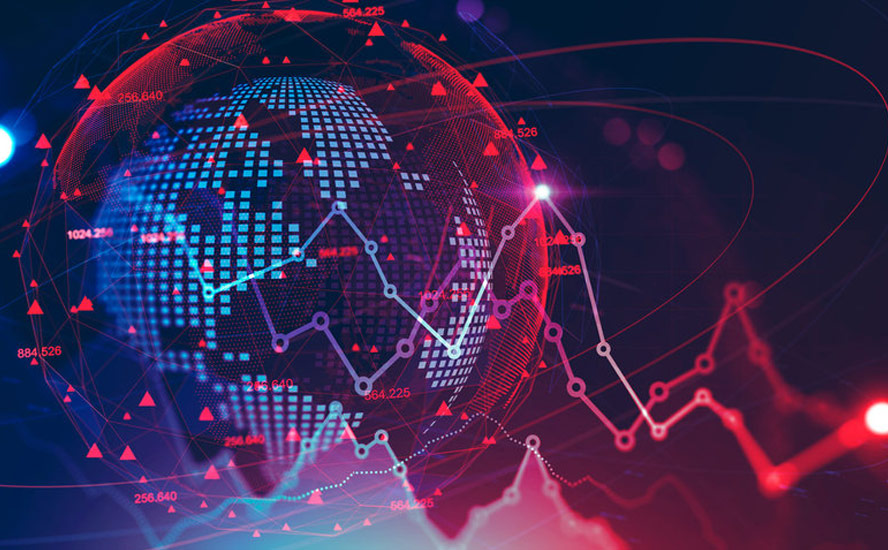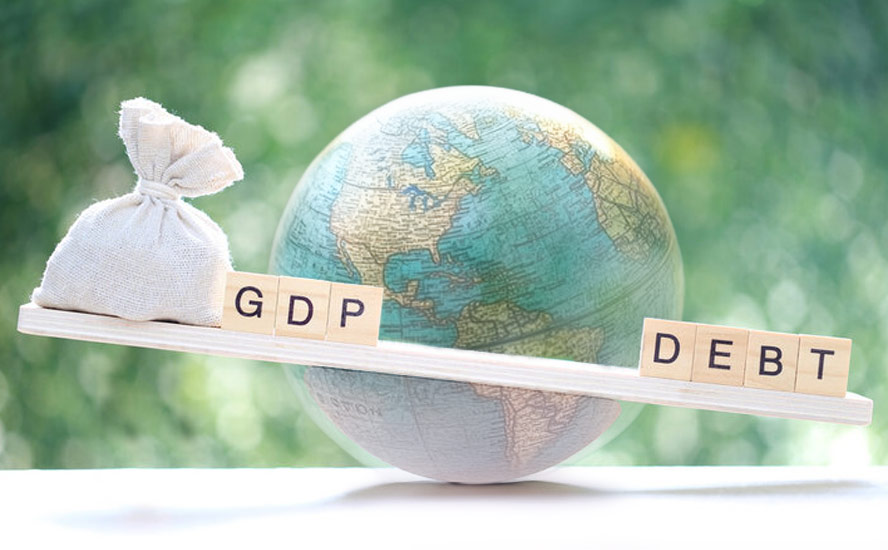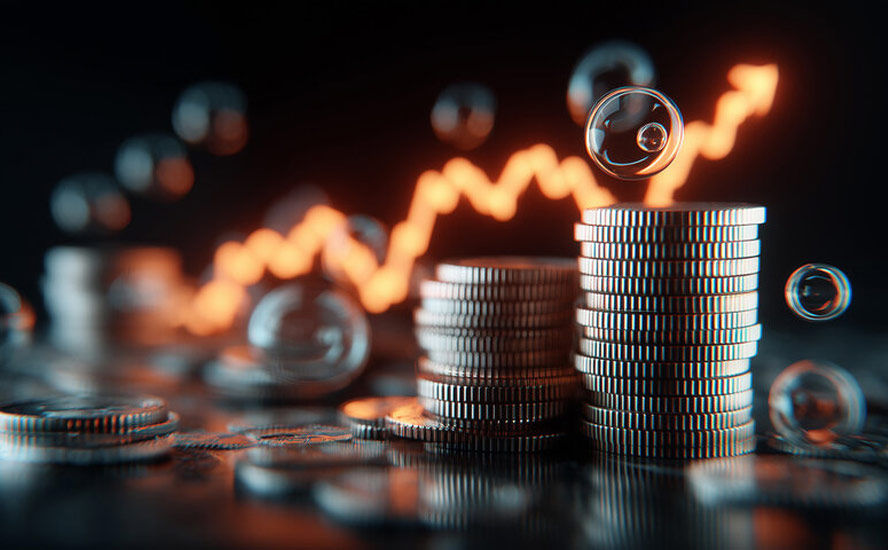Is it time to expel China from the world community?

2020.04.14
“Today the House of Representatives has taken an historic step toward continued prosperity in America, reform in China, and peace in the world. . . it will open new doors of trade for America and new hope for change in China.”
That was President Bill Clinton, commenting on the spring, 2000 vote in the US House of Representatives, to normalize relations with China. The vote was effectively a US endorsement of China joining the World Trade Organization (WTO), and confirmed the pro-accession stance of the White House.
Hard to believe now, but at the time, the United States considered China’s accession to the club of 164 nations, which sets the rules for global trade, to be a no-brainer – the US would gain a great deal from having China, then a rising economic star, contained within a prescribed set of trading rules, without having to give up much in return.
Beyond that simple premise, there were three reasons why President Clinton and others championed the idea of China joining the WTO. First, US officials presumed that Beijing would reduce tariffs and guarantee intellectual property rights, thus allowing American companies to reap huge profits from increased trade with Chinese companies. Second, they thought that WTO membership would act as a check on China’s communist government, by speeding China’s transition to a market economy and letting it have a greater stake in setting global trade rules. Third, it would legitimize the WTO as a global organization, by having the nation of a billion people, then the world’s sixth largest economy and growing fast, among its members.
Twenty years on, the notion that free trade will lead to democracy in China seems incredibly naive; current President Xi Jinpeng has eliminated presidential term limits, effectively making him the country’s leader for life.
Xi’s ambitious goal is to reclaim China’s past glories by restoring its once-mighty Eurasian empire. That has meant beefing up China’s military, including an arsenal of short-, medium-, long-range and nuclear weapons, a 335-ship navy, and the largest active-duty military force in the world, with about 2.1 million personnel; introducing its ‘Made in China’ strategy to shift the economy from production of lower-end goods to higher-value products like aerospace and semi-conductors; and spending vast sums on its ‘Belt and Road Initiative’ involving infrastructure investments in nearly 70 countries in Asia, Europe and Africa.
Students of economic history understand that China’s rise is the story of the 21st century. In just under 30 years, the country has moved from one of the world’s poorest countries, to its second-largest economy. In 1990 China’s gross domestic product (GDP) per capita was $318. It took a decade to get to $1,000, and by 2018 each citizen was earning just under $10,000, an increase of $2,970%.
Between 1978 and 2012 China’s real GDP, on average, rose an impressive 9.4%, its double-digit growth fed by a voracious hunger for commodities. Indeed the “commodities supercycle” of the early 2000s was largely due to strong, steady demand for food, oil, metals, chemicals and fuels from emerging-market BRICs, particularly China.
This level of growth would not have been possible without China becoming part of the WTO in 2001. Beijing knew that to achieve its economic goals, it would have to continue opening up its pre-1978 socialist, planned economy, to the rest of the world. China wanted to join the WTO because it would give the country access to new trading partners, raise its living standards, and provide it a seat at the table in a rapidly globalizing world.
In sum, China needed the WTO as much as the WTO needed it.
The symbiotic relationship however was short-lived. The “one-way-street” President Clinton predicted would move US-China trade in America’s direction (with workers, consumers and investors being the biggest beneficiaries) turned out to be more of a highway speeding toward China. On the plus side, US consumers benefited from low-cost Chinese imports, and corporations profited from access to the largest market in the world. One of the sectors to gain most was agriculture; since 2001, the value of US farm exports to China increased by 1,000%.
But China’s rise, assisted by WTO membership, came at a huge cost to US workers. According to a landmark study by MIT economist David Autor, between 1999 and 2011, about 20% of US manufacturing jobs, close to 1 million positions, were eliminated due to competition from China and its vast supply of cheap labor.
In the Middle Kingdom, the rewards of WTO membership gradually stacked up. A projection of per capita GDP reaching $7,000 by 2015 was bested by two years. Since 1999, over 400 million Chinese have been lifted from extreme poverty. China’s economy is eight times larger than it was in 2001, and trade in goods between the US and China increased 30-fold, from less than $8 billion in 1986 to over $578 billion in 2016, according to World101. In 2009 China surpassed Germany to become the world’s largest goods exporter.
As for the hope that welcoming China into the club of trading nations would loosen the Chinese Communist Party’s hold on power, in fact the opposite has occurred. As China became richer, it further legitimized the CCP, which President Xi Jinping believes believes is central to maintaining economic stability and enabling China to dominate technology-driven industries, states World101.
China’s tight government controls extend to the internet, which was supposed to be a gateway to reform and innovation. China regulates internet use, limiting access to commerce and social media. China has blocked political organizing by threatening—and sometimes jailing—those who post critical comments online. The Chinese government also uses the internet to identify and track dissidents.
Flouting the WTO
Moreover, the WTO rules were not written with China in mind. That’s important, for while China’s economy has elements of a capitalist system, it is run by a one-party state, giving it that special blend of “Capitalism with Chinese characteristics.” This means China’s many “state-owned enterprises” (SOEs) including mining and energy companies, are heavily influenced by the government.
China soon figured out the best way to play the WTO, was taking advantage of provisions that suited its interests, and skirting less convenient restrictions. For example, Beijing has embraced WTO regulations allowing it to expand Chinese companies and investments abroad, but obstructed foreign firms from investing and operating freely in China. Also, the Geneva-based institution characterizes China as a developing country, affording it certain protections, such as providing subsidies to agriculture, and setting higher barriers to market entry than more developed economies.
World101 states: China has incurred criticism for carrying out certain market-distorting practices, and has been accused of cheating the system in various ways. Sometimes it violates the letter of the law, sometimes the spirit.
Industry Week describes China’s main strategies:
- Forced technology transfers. China is accused of stealing technological knowledge from foreign companies operating in China. One of the ways it does this is through joint-venture partnerships. To enter the Chinese market, the foreign company must partner with a Chinese firm, which is often owned or controlled by the government. If the JV involves sharing technology secrets, the foreign firm is in effect giving away their secrets to the Chinese government.
- Technology theft. Chinese companies are said to use espionage, counterfeiting and the purchase of American tech companies for the express purpose of stealing their technology. According to a 2015 report to Congress, “China’s government conducts and sponsors a massive cyber espionage operation aimed at stealing trade secrets and intelligence from U.S. corporations and the government.”
- Subsidies. The Chinese government gives direct support through state funding or tax breaks. A less direct means of subsidy is for state-run banks to provide below-market loans to companies controlled by the state. These subsidies aren’t breaking any WTO rules, but they violate the spirit of WTO’s regulations promoting fair competition.
- SOEs. Some industries in China, like the steel industry, are heavily subsidized. This allows China to “dump” low-cost products into a competitor’s country, thereby capturing market share and driving higher-cost competitors out of business.
- R&D. China requires foreign companies to build research & development facilities in China, which are vulnerable to intellectual property theft.
- Currency manipulation. Since joining the WTO China has been accused many times of artificially keeping its currency low, making Chinese exports 30-40% cheaper than US products. Yet there is no WTO provision against currency manipulation.
The degree to which China benefited from its first decade and a half in the WTO, viz a viz the US, was reflected in the much higher volume of US imports from China, compared to US exports to China. The growing US-China trade deficit was one of Donald Trump’s primary targets for criticism during his 2016 presidential campaign, and the antecedent of his trade war launched approximately two years ago.
The Atlantic states: The unbridled access to Chinese markets promised to U.S. companies never materialized, nor did a surplus of high-paying jobs suddenly appear across America. For many in the Trump administration, especially people like the economic advisor Peter Navarro and U.S. Trade Representative Robert Lighthizer, the decision to bring China into the WTO sold average Americans out to U.S. political and business elites.
Surveillance state
As China and its trading partners swap daily volumes of shipments worth billions, Beijing is cracking down on dissent and building a large security apparatus to spy on its citizens.
The LA Times writes, Since Xi Jinping came to power[in 2012], hundreds of activists, lawyers, writers, publishers and employees of nongovernmental groups have been rounded up. Many more have been threatened and intimidated. Internet news sites have been ordered to stop publishing reports from sources that aren’t sanctioned by the state.
Even as China has been touting its efforts to boost the “rule of law,” some critics of the government have vanished under mysterious circumstances in places like Thailand and Hong Kong, only to surface months later in Chinese custody, claiming rather unbelievably they had turned themselves in voluntarily. Many of those detained have appeared on state-run TV confessing to crimes before they have had a day in court.
The country has turned to sophisticated artificial intelligence (AI) to exert social control and suppress political activity. A vast network of surveillance cameras constantly monitor people’s movements, reportedly to reduce crime and terrorism.
Facial recognition software and AI have combined to produce a “social credit score” for every citizen that helps authorities to reward or punish behaviour – even jaywalking. This program that in the West would be considered abhorrent, a gross invasion of privacy, is reportedly quite popular among Chinese citizens.
Internet access is limited to web sites that have passed government censors. China’s “Great Firewall” prohibits popular Western sites such as Google, Facebook and The New York Times. Yet while China is ranked lowest in the world for its degree of Internet freedom, authorities see citizens’ online activities as a rich cache of information.
According to The Atlantic, China’s evolving algorithmic surveillance system will rely on the security organs of the communist party-state to filter, collect, and analyze staggering volumes of data flowing across the internet.
Recently, telecom carriers started scanning the faces of anyone applying for mobile or Internet service. Is there any doubt the Chinese government will make good use of this valuable information?
Undoubtedly the worst repression and heavy-handed surveillance, comparable to something out of George Orwell’s dystopian novel ‘1984’, occurs in the province of Xingiang, home to the country’s minority Muslim population, the Uyghurs.
There, an estimated 2 million Chinese Muslims have been detained in “vocational education and training centers” that are, in reality, large prisons aimed at re-educating Muslims to drop their beliefs and customs, and to assimilate with China’s Han majority.
“It’s an open prison,” Omer Kanat, director of the Washington-based Uyghur Human Rights Project, told Buzzfeed in 2017. “The Cultural Revolution has returned [to the region], and the government doesn’t try to hide anything. It’s all in the open.”
Prisoners are denied access to their families during their incarceration. When they are released, fully indoctrinated, some, including a woman in a recent PBS Frontline documentary, cut ties to their families including children.
Uyghurs living in Xinjiang must install an app on their phones that makes them trackable by authorities. Phone calls are monitored and placing a call to an international number will likely lead to a visit from police. Armed police officers man checkpoints where phones are checked for banned apps like Facebook and Twitter, and text messages scanned for evidence of religious language.
The Chinese government says the security measures are necessary due to past violence by Uyghur militants – riots in 2009 left almost 200 dead and there were a series of deadly knife and bomb attacks in 2013-14 – but human rights watchers have described what China is doing as “the largest mass incarceration of an ethnic group since the Holocaust.”
Beyond its borders, China has acted to aggressively rein in regions with desires for self-determination, ie. Hong Kong and Taiwan.
Former President Obama’s pivot to Asia, to be realized through increased trade like the Trans Pacific Partnership (TPP) and increasing its regional military profile, was a failure. The US could not prevent China from annexing 80% of the South China Sea, defend freedom of navigation through the $5-trillion annual maritime trade corridor, or stop China-backed North Korea from conducting nuclear tests. China is a close ally of North Korea.
Meanwhile China continues to expand its military. Ongoing maneuvers in the South China Sea show that Beijing is willing to flex its muscles in a region it sees as strategically and economically important – even if it means going up against the almighty US Navy, mandated to safeguard international shipping lanes and to defend its ally, Taiwan, considered by China to be a renegade province that must be united with the motherland.
China has also projected economic power through a series of mineral and oil acquisitions in Africa, Canada, the US, Australia and Latin America. The reason, of course, is to feed China’s insatiable appetite for commodities. As an example, the Chinese are both the largest producers and consumers of aluminum and iron ore.
The enormous political, economic and cultural shift in China, from a developing agrarian society to a modern, urban one, has led to some remarkable developments, all of which are good for commodities. China’s Belt and Road Initiative is a $900 billion industrial strategy to open channels between China and its neighbors, mostly through infrastructure investments. China long ago put a lock on much of Africa’s vast mineral resources, including oil, iron ore, copper, cobalt and platinum.
Locking up metals
More recently the most desired metals are those that feed into the global shift from fossil fuels to vehicle electrification. This has meant a hunt for lithium, cobalt, graphite, copper and rare earths – metals that are used in electric vehicles, of which China has become the world leader. China has been acquiring mines and mining company stakes abroad – including in Canada’s oilsands, Australia’s coal sector (Chinese-owned Yancoal Australia in 2017 acquired Coal & Allied from Rio Tinto for AUD$3.5 billion, making it Australia’s largest thermal coal mining company), and the DRC (in 2016 China Molybdenum bought Freeport McMoRan’s 70% stake in the Tenke Fungurume copper-cobalt mine; China’s Zijin Mining has a 39.6% stake in one of the world’s largest copper deposits under development, Kamoa-Kakula).
Often China’s modus operandi is to build mines in exchange for providing infrastructure that supports, and gains the favor of, the local population, such as schools, health clinics, roads and clean water systems.
Over the past few years, overt resource grabs by China in what used to be the US backyard, countries defined by ‘The Monroe Doctrine’, include:
- Shandong Gold partnered with Barrick Gold to purchase a 50% stake in the Veladero gold mine on the Chile-Argentina border for $960 million.
- Two large Peruvian copper mines are owned by Chinese companies. Chinese state-run Chinalco owns the Toromocho copper mine, while the La Bambas mine is a joint venture between operator MMG (62.5%), a subsidiary of Guoxin International Investment Co. Ltd (22.5%) and CITIC Metal Co. Ltd (15.0%).
- In 2018 China’s Tianqi Lithium purchased a 23.7% stake in Chilean state lithium miner SQM, despite concerns from regulators that the $4 billion tie-up would give Tianqi a near monopoly over the lithium market and unprecedented pricing power.
- The Chinese are also investing in early-stage lithium plays. In 2018 Bacanora Minerals, which has a lithium project in Mexico, announced that NextView Capital, a Chinese institutional fund manager, acquired a 19.89% equity interest, in exchange for a lithium battery offtake agreement.
China actively uses its economic heft to dominate the competition and to control prices. We saw this 10 years ago in the rare earths market and we are currently seeing it in lithium and nickel.
Rare earths
During the 1990s, the only rare earths mine in the United States, Mountain Pass in California, ran into trouble. Owner Molycorp faced legal action in 1997 after it was discovered that repeated spills from its wastewater pipes had contaminated the Mojave National Preserve with trace amounts of radioactive thorium, barium and uranium.
It was around this time that China started a program to develop its rare earth deposits. The Chinese began mining the massive Bayan Obo mines north of Baotou, Inner Mongolia – containing an estimated 70% of the world’s rare earths reserves.
But China wouldn’t have been able to develop its REE industry if it wasn’t for the dubious acquisition of Magnequench, a division of General Motors established in 1986. In 1982, General Motors research scientist John Croat created the world’s strongest permanent magnet using rare earths. The purpose of Magnequench was to produce neodymium-iron-boron (NdFeB) magnets, a superior type of permanent magnet that GM needed for its vehicles.
In 1988 Indianapolis-based Magnequench was mysteriously sold to members of former Chinese leader Deng Xiaoping’s family. The facility was then shut down and moved to China in 2000.
For the fascinating story of how Magnequench and its technology was ceded to the Chinese, read a 2006 article by Jeffrey St. Clair. (The connection with the Deng Xiaoping family was through the Sextant Group, which purchased Magnequench from GM. Sextant was a front for two Chinese companies with close ties to the government, which it is believed targeted Magnequench for developing its long-range cruise missiles).
Since then, most rare earth metals, alloys and magnets needed by US defense contractors come either directly or indirectly from China. According to the US Geological Survey, the United States relies on Chinese imports for at least 20 minerals, including rare earths.
The final nail in the coffin for US rare earths came in 1998 when the US National Defense Stockpile sold the entire strategic reserve of rare earths. The same year, the last US producer of rare earth metals and alloys, Rhodia Incorporated, closed its processing facility in Texas and built a new one in Mongolia.
In 2009 the Chinese government imposed export controls on its rare earths, meaning a 40% drop in exports. Beijing said it had to implement quotas to protect the environment, but critics saw them as naked protectionism.
China was about to play Molycorp like an erhu, a Chinese violin.
A year later, an international incident sent rare earth oxide prices into the stratosphere. In September 2010 a Japanese naval vessel interdicted a Chinese fishing boat near the Senkaku Islands, which Japan and China both claim ownership of, and detained the captain. The response hardly seems balanced in retrospect, but the Chinese decided to ban all rare earth exports to Japan, then an industrial powerhouse and China’s largest REE customer. The rare earths market panicked, and within months, all of the rare earth oxides gained in price.
The result was the re-opening of the Mountain Pass Mine, including a $130 million investment by Japanese conglomerate Sumitomo to upgrade the mine. By 2014 it was producing 4,700 tons of rare earths a year.
While the spike in rare earths prices was good for miners like Molycorp and the numerous exploration companies that sprang up in search for them, buyers of products made from rare earths balked and pressured governments to do something about it. The US, European Union and Japan brought a case to the World Trade Organization to try and settle the dispute and get China to lift the restrictions.
In 2015 it did, resulting in a torrent of Chinese rare earth exports into the market and the inevitable collapse in prices. The move caught Molycorp off-guard. The company had just spent over a billion dollars on another upgrade at Mountain Pass but within months, the company fell deeply in debt and went bankrupt.
The mine was put on care and maintenance and eventually sold at auction in the summer of 2017 for a shocking $20.5 million – a fraction of its previous worth. The new owner is MP Mine Operations LLC, an American-led consortium, with Chinese rare earths miner Leshan Shenghe Rare Earth Co. holding a minority interest. Mountain Pass currently ships rare earths concentrate for refining in China.
Lithium, cobalt and EVs
We know from previous articles that China has been extremely active in acquiring ownership or part-ownership of foreign lithium mines and inking offtake agreements.
By 2025, the Chinese government wants EVs to represent 20% of all cars sold.
By comparison, the US sold 361,307 EVs in 2018, just under a third of China’s volume.
China of course, has also locked up the rare earths market and is the primary player in a number of critical mineral markets including cobalt, graphite, manganese and vanadium.
For years the United States and Canada didn’t bother to explore for these minerals and build mines. Globalization brought with it the mentality that all countries are free traders, and friends. Dirty mining and processing? NIMBY. Let China do it, let the DRC do it, let whoever do it.
China recognized opportunity knocking and answered the door, seizing control of almost all REE processing and magnet manufacturing, in the space of about 10 years.
In 2019, as part of its trade war strategy, China raised the prospect of restricting exports of lithium and rare earths – commodities that are critical to America’s defense, energy, electronics and auto sectors.
Over half of the world’s cobalt – a key ingredient of electric vehicle batteries – is mined as a by-product of copper production in the Democratic Republic of Congo (DRC). In a $9 billion joint venture with the DRC government, China got the rights to the vast copper and cobalt resources of the North Kivu in exchange for providing $6 billion worth of infrastructure including roads, dams, hospitals, schools and railway links.
China controls about 85% of global cobalt supply, including an offtake agreement with Glencore, the largest producer of the mineral, to sell cobalt hydroxide to Chinese chemicals firm GEM. China Molybdenum is the largest shareholder in the major DRC copper-cobalt mine Tenke Fungurume, which supplies cobalt to the Kokkola refinery in Finland. China imports 98% of its cobalt from the DRC and produces around half of the world’s refined cobalt.
In 2018 the United States produced just 500 tons of cobalt compared to 90,000t mined in the DRC. The US did not produce any vanadium either; the top three producers of the steel additive are, in order, China, Russia and South Africa.
As Quartz notes, in order to maintain its dominance in the EV market, Chinese manufacturers need a lot of cheap lithium. That explains why its largest lithium miner, Tianqi Lithium, owns 51% of Australia’s Greenbushes spodumene mine – the world’s dominant hard-rock lithium mine. And why China bid for, and got, a 23.7% stake in Chilean state lithium miner SQM, the second largest in the world, for $4.1 billion.
China produces roughly two-thirds of the world’s lithium-ion batteries, compared to 5% for the United States, and controls most of its processing facilities.
Nickel
Nickel is used in two of the dominant battery chemistries for EVs, the nickel-manganese-cobalt (NMC) battery used in the Chevy Bolt (also the Nissan Leaf and BMW i3) and the nickel-cobalt-aluminum (NCA) battery manufactured by Panasonic/Tesla.
Battery manufacturers have been developing nickel-rich NCM 811 batteries (80% nickel, 10% cobalt and 10% manganese) because they have longer lifespans and allows electric vehicles to go further on a single charge.
Most Chinese battery manufacturers use lower-cost lithium-iron-phosphate batteries ie. no nickel, but they are looking to migrate to nickel-containing batteries with several including Shanshan, Nichia, L&F & Reshine producing them. China’s biggest battery manufacturer, Contemporary Amperex Technology (CATL) told investors it has begun mass production of the NCM 811.
In January construction started on the battery plant in Morowali, Indonesia, led by a consortium of Chinese developers including Tsingshan, battery company GEM Co Ltd., and units of CATL – the largest EV battery company in the world. Nickel feedstock for the plant would come from Indonesia’s nickel laterite ores (Tsingshan says the feed would be abandoned low-grade nickel ores).
Cobalt may also be part of the facility, according to electrive.com, as EV automakers aim to diversify supply from cobalt controversially sourced from the DRC. PR Newswire names a number of companies exploring for cobalt within Indonesia’s nickel laterite deposits. Ninety-nine percent of cobalt is unearthed as a by-product of copper and nickel mining.
Jinchuan, China’s top nickel producer, plans to build a project in Guangxi that will produce raw materials for the EV battery market.
It makes sense to use more nickel in EV batteries, because doing so increases the battery’s energy density, thereby extending the vehicle’s range.
It also explains why China needs nickel sources to fuel its booming electric-vehicle industry. (China is by far the largest EV manufacturer, followed by the US) In 2018 China only produced 110,000 tonnes of nickel compared to 560,000t in Indonesia and 340,000 in the Philippines. If it’s switching from phosphate-based lithium-ion batteries to nickel-based, it needs a large, secure supply of the base metal.
The country already has a lock on cobalt, graphite and rare earths production, so why not get a monopoly on the nickel market, too? China appears to be using Indonesia’s ban on raw nickel exports to do just that. Not only did China buy up most of the world’s nickel stockpiles from under the nose of the LME, it also managed to give itself a two-year head-start on the rest of the world in working with Indonesia to develop a huge facility for developing battery-grade nickel. Chinese-led, of course. Because China doesn’t really care about helping Indonesia to become an EV battery hub. Its real goal is to establish a nickel-processing beach-head in the largest nickel producer in the world, using Chinese technology to process class 2 nickel laterite deposits into class 1 battery-grade metal. Then sell its nickel chemicals to battery companies either in China or Belt and Road countries, as it continues on the path to complete global metals domination.
Solar
China has also gone to great lengths to monopolize the solar power sector. In the early 2000s, Chinese manufacturers who supplied most of the world’s solar panels expanded too fast, leading to an oversupply of panels and causing prices to tank. In 2016 China was accused of violating an agreement with the European Union, after another surge in Chinese panel production lowered prices, inflicting damage on China’s EU competitors.
After four years of relative peace, the solar industry may be on the verge of another war, with China again in the cross hairs. According to a recent article in Oilprice.com, the solar market is becoming “super-sized”, with the size and scale of solar projects soaring, due to large tech companies like Apple, Google and Facebook making big investments in solar farms to run their operations.
At the center of this expansion is China, by far the market leader in solar; of the top 10 solar cell makers, nine are Chinese. Despite the demand shocks to China’s economy caused by the coronavirus outbreak, 13 Chinese firms are expected to add at least 40 gigawatts of annual capacity “in ingots, wafers and cells each by the end of 2020,” according to Bloomberg NEF.
Oilprice says this could have some negative unintended consequences, such as exacerbating the already problematic glut of photovoltaic products, which, in turn, could lead to price wars.
Coronavirus deceit
There are now stacks of evidence proving that the Chinese government undertook pernicious measures to conceal the coronavirus outbreak in Wuhan. They included destruction of virus samples, suppression of information, and delaying lockdown of a city of 11 million, allowing the virus to spread throughout China and worldwide, through airline travel during the Chinese Spring Festival, the largest annual migration of holiday travelers on earth.
The Times newspaper reported, Chinese laboratories identified a mystery virus as a highly infectious new pathogen by late December last year, but they were ordered to stop tests, destroy samples and suppress the news, a Chinese media outlet has revealed.
A regional health official in Wuhan, centre of the outbreak, demanded the destruction of the lab samples that established the cause of unexplained viral pneumonia on January 1. China did not acknowledge there was human-to-human transmission until more than three weeks later.
Those who knew about the virus and began warning people about it were silenced. In early December, eight doctors who shared their suspicions in a private online chat were summoned by Chinese authorities for propagating “rumors” about a SARS-like disease.
One of the doctors, 34-year-old Li Wenliang, later contracted covid-19 and died.
In mid-March, an outspoken property tycoon who criticized President Xi for his coronavirus response, disappeared.
Currently, China is presented as a country that acted quickly and decisively to defeat the coronavirus. In fact, the pandemic likely could have been avoided, or much better contained, had the Chinese government been forthcoming about the virus to its own people and the rest of the world. Blame rests at the feet of the Chinese Communist Party and President Xi Jinping. Authorities knew the disease was capable of spreading between humans in December, yet allowed Chinese New Year festivities to go ahead as planned, including a banquet of tens of thousands of families in Wuhan.
The Wall Street Journal estimates the Chinese government “let some five million people leave Wuhan without screening.”
Finally on Jan. 23 the city was locked down, seven weeks after the virus first appeared.
Moreover, a wide net was cast in an effort to suppress information that could put the CCP in an unfavorable light. The Atlantic reports, well before the new coronavirus spread across American cities, the Chinese regime was already rather creatively trolling U.S. publications, expelling American journalists, and “weaponizing wokeness” over anything it perceived as critical of China’s role in mishandling the epidemic.
In this respect, the Chinese found a willing accomplice in the World Health Organization (WHO), which receives funding from China (and other member states including the US, its largest contributor) and depends on the regime for accurate health data.
According to Foreign Policy, a respected international relations journal, WHO experts didn’t have access to the country until Director-General Tedros Adhanom visited President Xi Jinping at the end of January. Before then, WHO was uncritically repeating information from the Chinese authorities, ignoring warnings from Taiwanese doctors—unrepresented in WHO, which is a United Nations body—and reluctant to declare a “public health emergency of international concern,” denying after a meeting Jan. 22 that there was any need to do so.
After the Beijing visit, though, WHO said in a statement that it appreciated “especially the commitment from top leadership, and the transparency they have demonstrated.” Only after the meeting did it declare, on Jan. 30, a public health emergency of international concern. And after China reported only a few new cases each day, WHO declared the coronavirus a pandemic March 11—even though it had spread globally weeks before.
Now that China has flattened its coronavirus curve and life is returning to normal in Wuhan and other parts of China that were locked down during the outbreak, a propaganda drive by Chinese officials and state media is ramping up to cast aspersions on the origins of the virus.
A Chinese Foreign Ministry spokesman tweeted that the coronavirus was carried to Wuhan by 300 American military athletes, who were competing in the Military World Games. This conspiracy theory rests on several athletes becoming infected and passing it onto the Chinese population.
While the US athletes theory cannot be dis-proven, logic dictates that if it were true, the plan backfired spectacularly, given the current mess the United States find itself in with over half a million coronavirus cases, more than five times China’s cases, if their data can be trusted.
Amid this row over coronavirus origin – Chinese officials have repeatedly stressed there has never been any conclusion as to where it began, despite scientific evidence – Beijing is reportedly tightening its grip over coronavirus research.
According to CNN, China has imposed restrictions on the publication of academic research regarding the origins of covid-19. The new policy stipulates that all academic papers about the disease will be subject to extra vetting before publication, and be approved by government officials.
“I think it is a coordinated effort from (the) Chinese government to control (the) narrative, and paint it as if the outbreak did not originate in China,” a Chinese researcher told CNN. “And I don’t think they will really tolerate any objective study to investigate the origination of this disease.”
Another part of the propaganda campaign is to depict China as a hero that, being first to “walk into the light” after three months living under the shadow of covid-19, is keen to extend humanitarian assistance to countries still in its throes.
For example China sent medical supplies to Europe, Iran and Canada.
Foreign Policy argues that, rather than China’s wish to be seen as a fresh convert to altruism, its real motivations are economic and strategic. The publication asserts that China has been quick to exploit Western weaknesses, particularly with respect to the EU, which it sees as a rival on the European continent, and in its propaganda war with the United States:
It is hard to believe that a country that interns more than 1 million of its own citizens is capable of altruism. Indeed, every Chinese action betrays a Machiavellian motivation behind a humanitarian guise.
Take, for example, the decision by Chinese telecommunications giant Huawei to donate 800,000 masks to the Netherlands. Why would the conglomerate, known for its closeness to the Chinese government, display such benevolence toward a country which, at the time, had hardly any coronavirus cases? Surely it could not be because the Netherlands’ auction of fifth-generation (5G) mobile licenses is slated for June, and because the Dutch still have to decide whether to exclude Huawei from its 5G networks over espionage concerns.
Or consider Italy, where China has sent doctors and donated ventilators that have been in short supply. Does China’s newfound interest in Italy’s well-being stem from genuine concern, or from that of Rome’s status as one of Europe’s biggest supporters of the Belt and Road Initiative?
Perhaps, then, China’s donation of 500,000 masks to Greece is an uncharacteristically generous gift. Or is it nothing but a gift horse, part of a much longer campaign that has showered Greece with trade and investment? Already, Greece has been a reliable supporter of China in Brussels, which Beijing increasingly counts on to veto any measures China considers to be against its interests—on trade, security, or human rights, for example. Another attempt by China to drive a wedge between Europeans is the so-called Cooperation Between China and Central and Eastern European Countries initiative. There, China has focused on non-EU countries such as Serbia, another recent recipient of Chinese aid in Europe.
The upshot is that just one-fifth of Italians now believe that EU membership is helping Italy, while two-thirds say that that membership is “a disadvantage.” Serbia, which is not in the EU but aspired to membership, has denounced Europe’s lack of solidarity and is publicly turning to Beijing for help. “The only country that can help us is China,” Serbian President Aleksandar Vucic said. “As for the rest of them, thanks for nothing.” Vucic duly thanked the Chinese Communist Party.
Health Silk Road
Considering how China concealed critical health data that would have given affected countries weeks of preparation for the coronavirus, destroyed virus samples and allowed millions of people in the virus epicenter to jump on planes and export covid-19, we find it very interesting how China is now promoting a “Health Silk Road” between itself and Belt and Road Initiative (BRI) countries, which number close to 70 and encompass about two-thirds of the world’s population.
Apparently Chinese President Xi first used the term when visiting Geneva in 2017, where he signed a memo of understanding with the WHO committing to building a Health Silk Road that would aim to improve public health in countries along China’s Belt and Road.
In that way, it is a rhetorical extension of BRI to the medical sector, similar to the “Digital Silk Road” envisioned for technology.
Xi again brought up the term in March, during conversations with Italian Prime Minister Guisepppe Conte about receiving Chinese medical supplies.
According to state media, it includes medical aid between China and Italy to “battle the COVID-19 pneumonia together,” as well as any activity that might support China’s vision of “a new approach for perfecting global public health governance.”
However, just like Chinese coronavirus aid to Europe is a trojan horse inviting greater Chinese influence on the continent, so does the Health Silk Road present opportunities for China to expand its trade orbit to the medical supply sector, to the exclusion of countries like the US, Canada, and UK, who have not signed up to BRI.
The Council of Foreign Relations explains the various ways it could work in China’s favor, and as importantly, benefit Chinese companies:
It is no secret that China is making a push for global health leadership during the coronavirus pandemic. The Chinese government is providing medical aid and consultation on a bilateral basis, often delivered directly by local Chinese embassies such as those in Malaysia, the Philippines, and Greece. In other cases medical supplies have been provided by companies engaging in BRI projects abroad, such as Huawei or China Communications Construction Company. The Jack Ma and Alibaba Foundations have delivered relief packages to dozens of countries ranging from Uganda and Ukraine to the United States. China has also lent economic support to some afflicted countries, including a $500 million dollar concessionary loan to Sri Lanka…
The CCP may be dusting off the Health Silk Road concept to take advantage of this moment of global upheaval. First and foremost, the Health Silk Road narrative serves a domestic role in legitimizing the rule of the CCP. Beijing’s highly conspicuous displays of aid to other countries signal to the Chinese people that the state is responding to the pandemic in a responsible way. Health Silk Road activities might also serve to mitigate concern within China as the place of origin of the novel coronavirus, using redemptive displays of aid and support to compensate for harm done.
Second, the Health Silk Road presents a framework through which Beijing may choose to revamp BRI, which it will likely do out of necessity due to COVID-induced shocks to the Chinese and BRI host economies…
The Health Silk Road could also be an opportunity to rebrand pre-existing aspects of BRI as more germane to the COVID-19 crisis. One could envision certain elements of the Health Silk Road being linked up to China’s Digital Silk Road, for example…
Lastly, the Health Silk Road might allow China to redeem its national reputation on the international stage, in particular by contrasting it with the maladroit responses of the United States and other European nations. Given China’s global aspirations, efforts to present itself as a global health leader should come as no surprise. It is still too early to tell the extent to which China’s global health sprint will transform its international profile—and there is reason to be skeptical that it will be revolutionary. But the United States has not done itself any favors with its own pandemic response, and its relative absence from early global health leadership has left China plenty of room to maneuver. The world’s road to pandemic recovery will be long and winding, but if China has its way it will run through Beijing.
Conclusion
Let us summarize what we know about China’s role in the world economy and its quest to acquire and monopolize the world’s resources. We need also to encapsulate how China has sought to turn the coronavirus crisis on its head, depicting it as a failure of Western nations and a triumph of its own authoritative response to beating the pandemic, then coming out of it with enough resources to practise benevolence.
At the end we think you will agree that China is sinking to new ethical lows in using covid-19 to expand its power amid a global health crisis of its own making that has so far seen close to 2 million global infections and over 126,000 deaths.
First, it is pretty obvious that when it comes to global trading, China pursues subjugation over cooperation. It adheres to WTO rules that allow Chinese companies to expand, and flouts those that would allow foreign companies to enter China to conduct normal operations and book profits. The only way China allows the latter to happen is for non-Chinese firms to form joint ventures with state-owned enterprises that serve as portals for the forced transfer of technology, for Beijing to use as it sees fit.
Could China be kicked out of the WTO for failing to honor its commitments? The idea has been floated before. A 2018 Wall Street Journal article notes that under the WTO’s founder charter, Article XXIII allows a case to be brought against a member state that doesn’t specifically violate the treaty but “nullifies or impairs” the benefits every other country expects to derive from the WTO.
According to Jennifer Hilman, a Georgetown University law professor, other countries should bring a “big, bold” case based under Article XXIII; by addressing China’s systemic violations, such a case would depend less on proving smaller, specific violations.
If the U.S., European Union, Japan, Canada, Australia, Mexico and South Korea brought the case jointly and won, China would either have to change its policies, or face WTO-sanctioned penalties on almost all of its exports. Ms. Hillman goes further: The findings could be used to amend the WTO charter to explicitly prohibit the offending policies. If China couldn’t abide by amendments, it would effectively withdraw from the WTO.
Sounds good to us. Will it actually happen? Probably not. Especially with China and the United States in the middle of negotiating a trade deal that has only achieved phase 1 agreement and is facing another huge, unexpected challenge – the worst global economic downturn since the Great Depression. Now is clearly not the time to be issuing threats.
Second, with respect to the coronavirus, we see China’s need for social control knows no limits. The regime in power during the Tiananmen Square massacre preferred the deaths of thousands of protesters than to open up the country to another revolution. Same with Hong Kong, currently. China doesn’t dare let protesters in the former British colony have any sort of victory, for doing so would signal weakness to Taiwan, which Beijing has said will eventually re-join the motherland.
Even when faced with the risk of millions of Chinese infecting the world with covid-19, the Chinese leadership chose to hide the rapidly worsening epidemic. Given the choice of admitting they had a huge problem, they instead suppressed information, including to the body supposed to be in front of these things, the World Health Organization, cracked down on whistleblowers, “disappeared” dissenters, and is now restricting the publication of academic research.
The fact that China is trying to brush all that under the carpet and present itself as the covid-19 Florence Nightingale is frankly sickening. Even more so considering that the countries it is helping are the ones China sees as vulnerable to its influence – like Italy, Serbia, and all the countries that have signed onto Belt and Road.
In a previous article we wrote about how China’s Belt and Road “partners” are at risk of becoming debt slaves to China.
In 2017, when Sri Lanka couldn’t pay off its Chinese creditors, Beijing took control of Colombo, a strategic port, through a 99-year lease. By the end of 2018, nearly a quarter of Sri Lanka’s foreign debt was owed to China – the money accepted for around $8 billion worth of ports and highways planned through BRI.
The Council of Foreign Relations article states, BRI participant countries will soon be facing economic crises of their own, and more BRI projects will be expected to stall as many less-developed countries are economically ravaged by the crisis, rendering them unable to service their debts.
Guess who rides to their rescue? China which extends them massive loans, thus indebting these countries for the foreseeable future to Beijing. Now bring in the Health Silk Road. What’s to stop China from blackmailing these countries with a quid pro quo: either sign onto agreements to buy your medical supplies from China, or we cancel your loans?
This makes perfect sense given China’s record so far, which is to doggedly pursue its own interests, by hook or by crook.
Richard (Rick) Mills
subscribe to my free newsletter
aheadoftheherd.com
Ahead of the Herd Twitter
Legal Notice / Disclaimer
Ahead of the Herd newsletter, aheadoftheherd.com, hereafter known as AOTH.
Please read the entire Disclaimer carefully before you use this website or read the newsletter. If you do not agree to all the AOTH/Richard Mills Disclaimer, do not access/read this website/newsletter/article, or any of its pages. By reading/using this AOTH/Richard Mills website/newsletter/article, and whether or not you actually read this Disclaimer, you are deemed to have accepted it.
Any AOTH/Richard Mills document is not, and should not be, construed as an offer to sell or the solicitation of an offer to purchase or subscribe for any investment.
AOTH/Richard Mills has based this document on information obtained from sources he believes to be reliable but which has not been independently verified. AOTH/Richard Mills makes no guarantee, representation or warranty and accepts no responsibility or liability as to its accuracy or completeness. Expressions of opinion are those of AOTH/Richard Mills only and are subject to change without notice. AOTH/Richard Mills assumes no warranty, liability or guarantee for the current relevance, correctness or completeness of any information provided within this Report and will not be held liable for the consequence of reliance upon any opinion or statement contained herein or any omission. Furthermore, AOTH/Richard Mills assumes no liability for any direct or indirect loss or damage or, in particular, for lost profit, which you may incur as a result of the use and existence of the information provided within this AOTH/Richard Mills Report.
AOTH/Richard Mills is not a registered broker/financial advisor and does not hold any licenses. These are solely personal thoughts and opinions about finance and/or investments – no information posted on this site is to be considered investment advice or a recommendation to do anything involving finance or money aside from performing your own due diligence and consulting with your personal registered broker/financial advisor. You agree that by reading AOTH/Richard Mills articles, you are acting at your OWN RISK. In no event should AOTH/Richard Mills liable for any direct or indirect trading losses caused by any information contained in AOTH/Richard Mills articles. Information in AOTH/Richard Mills articles is not an offer to sell or a solicitation of an offer to buy any security. AOTH/Richard Mills is not suggesting the transacting of any financial instruments but does suggest consulting your own registered broker/financial advisor with regards to any such transactions
Legal Notice / Disclaimer
Ahead of the Herd newsletter, aheadoftheherd.com, hereafter known as AOTH.Please read the entire Disclaimer carefully before you use this website or read the newsletter. If you do not agree to all the AOTH/Richard Mills Disclaimer, do not access/read this website/newsletter/article, or any of its pages. By reading/using this AOTH/Richard Mills website/newsletter/article, and whether you actually read this Disclaimer, you are deemed to have accepted it.


























